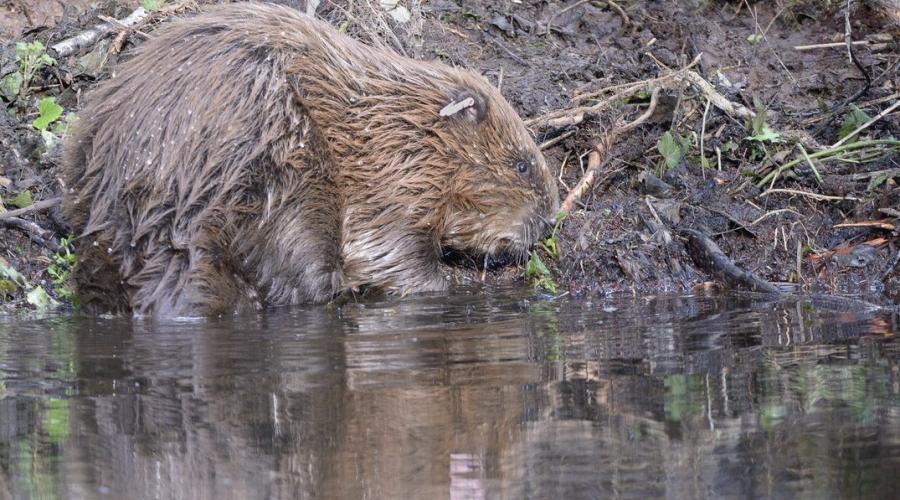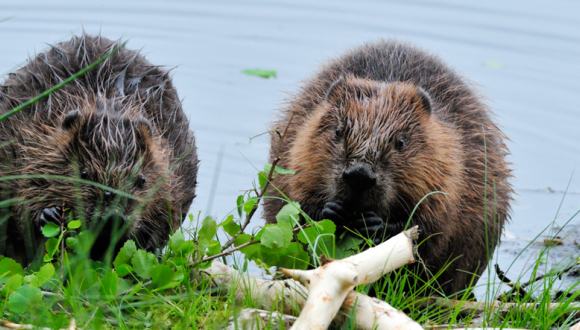
Scottish beavers aid Somerset reintroduction
30 January 2020
Partner Release: NATIONAL TRUST PRESS RELEASE
An adult pair of Eurasian beavers were released on 30 January on the Holnicote Estate on the edge of Exmoor in Somerset, to help with flood management and to improve biodiversity.
Beavers are currently only present in a handful of sites across the country.
Having once been an important part of the natural environment, beavers became extinct on mainland Britain in the 16th century due to hunting for their fur, meat and scent glands.
The enclosed beaver release is the first to be made by the conservation charity, as part of its ambition to create priority habitats for nature and to increase the diversity of species and wildlife numbers on the land in its care. As nature’s engineers, they are also a natural solution to help tackle climate change.
The two beavers – a male and a female - will be released into a 2.7 hectare fenced area of unmanaged woodland on the estate. The beavers have been relocated from wild populations on the River Tay catchment in Scotland, under licence from NatureScot, to England under licence from Natural England.
Ben Eardley, Project Manager for the National Trust at Holnicote says: “As ecosystem engineers the beavers will develop wetland habitat, increasing the variety and richness of wildlife in the local landscape.
“Their presence in our river catchments is a sustainable way to help make our landscape more resilient to climate change and the extremes of weather it will bring.
“The dams the beavers create will slow the flow, holding water in dry periods which will reduce the impact of drought. They will help to lessen flash-flooding downstream, reducing erosion and improving water quality by holding silt and pollutants.
“Although we are introducing a species that used to live here in the wild, this project is all about developing our landscapes of the future, helping us respond to the challenges the landscape and communities now face.”
Ben Ross, NatureScot’s Beaver Project Manager, added: “We’re very pleased to be able to help with this National Trust project. Beavers can have hugely positive impacts on nature and people, creating habitats such as ponds and wetlands where other species thrive, as well as moderating water flows and improving water quality. We wish the project every success and look forward to supporting similar projects elsewhere to realise the many benefits that beavers can provide.”
Mark Harold, director of land and nature said: “We need to work with natural processes in the right places. This is a different way of managing sites for wildlife - a new approach, using a native animal as a tool.
“The development of a more natural river system; the slowing, filtering and storing of water can develop a complex mosaic of habitats which are not only good for nature, but for people too.”
Once settled, the beavers will build a lodge or burrow and then begin to modify the enclosure to suit their needs, allowing them to move around freely through the water and access food.
The releases will be carefully monitored by National Trust staff and volunteers with help from Exeter University and others, to document ecological and hydrological changes to the habitat.
The beaver releases are linked to the wider work the Trust is doing on the estate through its Riverlands work, which includes the ‘Stage 0’ project on a tributary to the River Aller which began last Autumn. Although it will take several months for nature to take over, within days of restoring the stream, peregrine falcons, dragonfly and wagtails were spotted.
The release follows the Trust’s announcement at the start of the month of its plan to become carbon net zero by 2030, to plant 20 million trees over the next decade and to continue its work in reversing the decline of nature.




